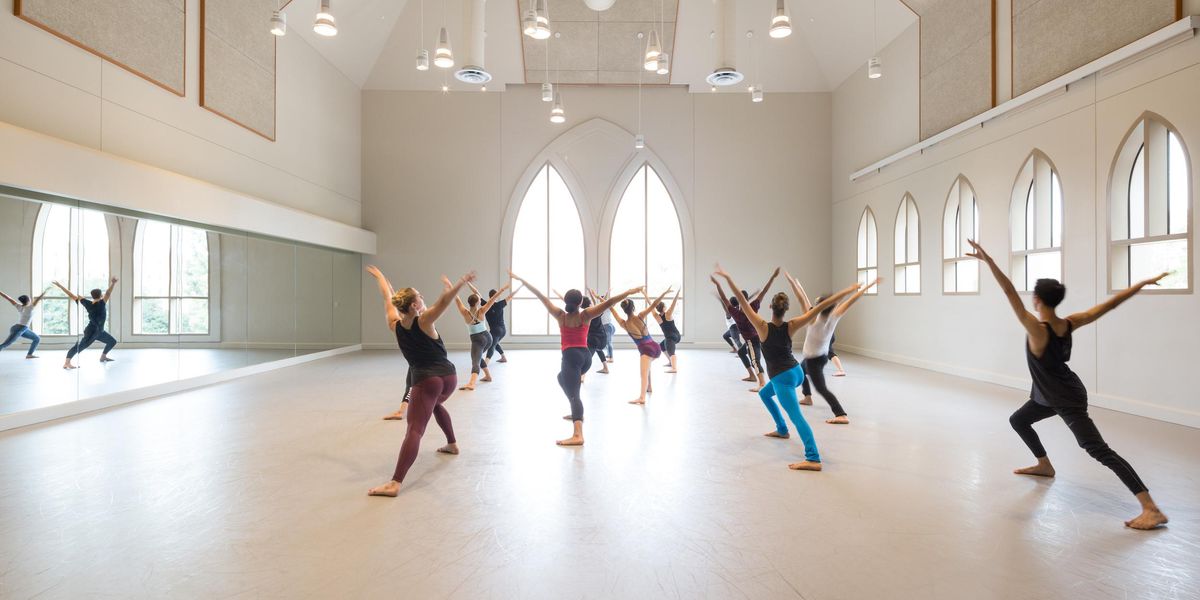Why Today's Gymnastics Routines Insult Dance
Simone Biles at the end of her gold medal-winning routine in Rio
Gymnastics have been my favorite part of the Olympics ever since I was a kid. Particularly the floor exercises. I was never a gymnast myself (I don’t count the year I spent falling off a balance beam in elementary school). But while growing up in the 80s and 90s, this event was the closest thing I had to watching dance on prime time TV.
Today, though, the sport seems to be growing further and further away from dance.
Just like in most sports—and even dance itself—the level of virtuosity in gymnastics seems to rise every year. The athleticism and power on display in Rio right now is jaw-dropping. Personally, I’m convinced that Simone Biles is superhuman. How else could a body jump that high and turn that many times in the air—and then land on two feet flawlessly?
But as the flips have become more stupefying, the dance moves have become more perfunctory.
That’s largely because, in a controversial move, the points system was overhauled in 2006 to emphasize more difficult acrobatic skills, and decrease the importance of artistry. The sport is technically still called “artistic gymnastics.” But the value placed on elegance and grace has all but disappeared.
Laurie Hernandez, photo via nbcnewyork.com
Out of the Americans, Laurie Hernandez is by far the best dancer of the bunch, with her sassy, musical moves. Rather than just going through the motions to show off skills that help her rack up tenths of a point, she actually grooves. Still, I wish she would point her feet more articulately. I wish her movement was slightly less jerky.
The quality of the gymnasts’ dancing is grating not because I’m spoiled by watching professional dancers. What bothers me is how obviously little attention is paid to the gymnasts’ dancing, even though the sport still feels the need to include it. The way it’s used is offensive to the art of dance. Rather than incorporating dance and tumbling together as cohesive choreography, gymnasts and their coaches now treat dance sections as a time to rest. So most gymnasts simply hit a series of awkward poses with little attention to the music.
It’s not the athletes’ fault. Points are awarded based on whether a split hits 180 degrees or a turn is fully completed. The system leaves little room for nuanced movement. Athletes can be deducted for a lack of musicality, interpretation or expression, but judges rarely take off points for something so subjective. They focus on more obvious markers of skill instead. Valorie Kondos-Field, a gymnastics coach and former ballet dancer, told Slate in 2012, “Sometimes you want to put in a jump on the floor that isn’t a 180 split, that sort of between a step and a leap—but if you do that, you’re going to get deducted because you didn’t hit 180.”
What’s doubly insulting, is how, as Roslyn Sulcas pointed out in a blog for The New York Times during the London Olympics, only female gymnasts are asked to dance. Men are allowed to approach the sport as straightforward athletes, while the women are decked out in sparkly leotards and makeup, and are expected to “perform” in a pretty, feminine way, with smiles on their faces—that is, until they start a tumbling sequence, a.k.a. the serious part of the routine.
To the International Federation of Gymnastics, I beg you: If dance is going to continue to be part of gymnastics, really incorporate it into the sport. Have men show off their bravado, too. Give the gymnasts more serious ballet training, and coach them on how to perform their dance sections well. Or take dance out of gymnastics completely. Stop insisting that it be included as a superfluous side show to the floor routines. Aren’t these gymnasts doing enough already without asking them to briefly shake their hips in the corner, too? Let the athletes actually rest for a second, catch their breath, then turn around to dazzle us again with another brilliant tumbling pass.





